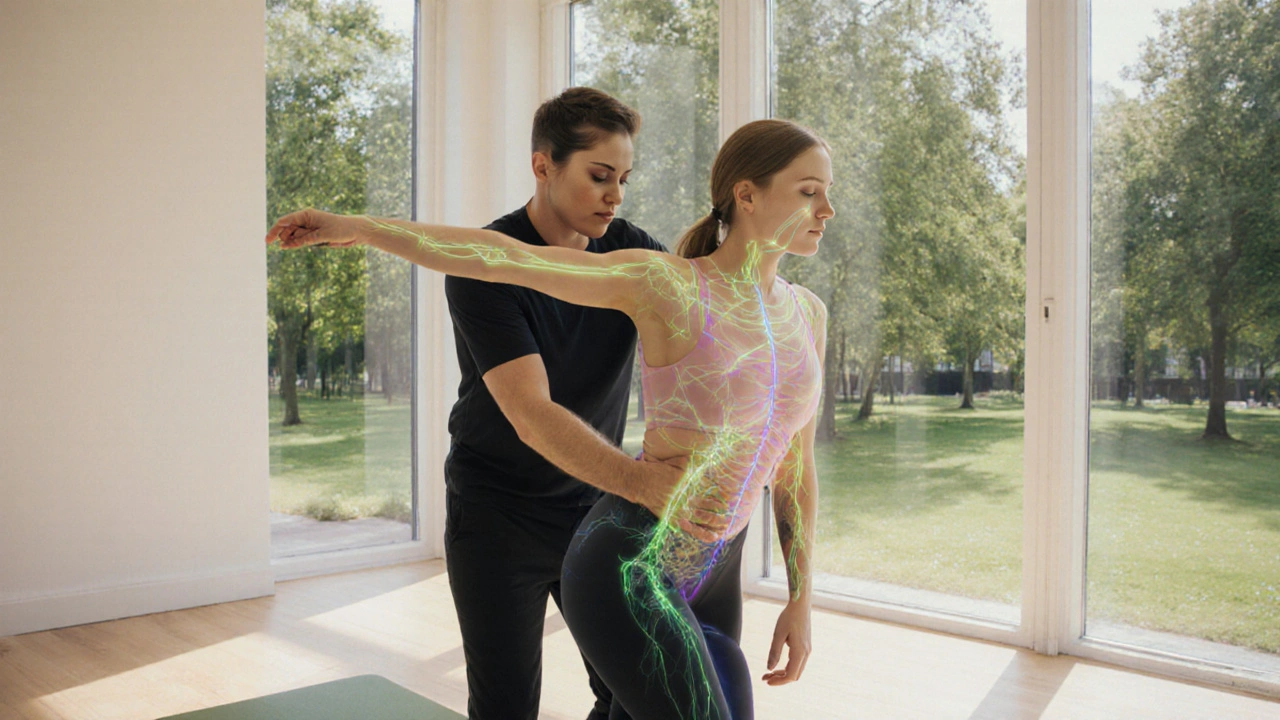Alternative Massage: Fresh Ways to Feel Better
Most people think of Swedish or deep‑tissue when they hear "massage," but there’s a whole world of alternative styles that can hit different aches, boost mood, or add a dash of sensual fun. Below you’ll get a quick rundown of the most interesting options, why they matter, and how to choose a therapist you can trust.
What Makes a Massage "Alternative"?
An alternative massage usually breaks the classic strokes or uses a special tool, oil, or philosophy. It might focus on energy flow (like tantric), on specific pressure points (reflexology), or on a unique medium (bamboo sticks or hot stones). The goal is the same—relaxation and relief—but the path is different.
Popular Alternative Techniques You Can Try
Abhyanga Oil Massage – An Ayurvedic tradition where warm herbal oil is poured over the whole body. It balances the three doshas, leaves skin soft, and often feels like a full‑body hug.
Aromatherapy Massage – Combines gentle touch with essential‑oil blends. Pick calming lavender for stress or invigorating citrus for a morning boost. Just make sure the therapist follows proper dilution rules.
Tantric Massage for Couples – Focuses on breath, eye contact, and slow, intentional strokes. It’s less about sexual climax and more about deepening intimacy and awareness.
Reflexology – Works on the feet (or hands) to stimulate nerve pathways linked to organs. Many report better sleep and less headache after a session.
Trager Therapy – Gentle rocking and rhythmic movements that release tension without deep pressure. Ideal for people who hate strong squeezes but still need mobility help.
Creole Bamboo Massage – Uses smooth bamboo rods to roll over muscles, creating a deep but soothing stretch. The wood’s cool feel can relieve chronic tightness.
Trigger Point Therapy – Targets knotty spots that refer pain elsewhere. A therapist applies focused pressure for 30‑90 seconds, which often releases a stuck nerve.
Stone Massage – Hot or cold stones are placed on key points, then used as extensions of the therapist’s hands. The temperature contrast can melt tension fast.
Each style offers a different “feel,” so it helps to try a few and see what clicks with your body.
How to Pick the Right Alternative Massage
- Know your goal. Want stress relief? Try aromatherapy. Want better mobility? Trager or bamboo might be best.
- Check credentials. Look for a licensed therapist and read reviews. A clear hygiene policy is a must.
- Ask about oils and tools. Some people are sensitive to certain essential oils or to heat. A good therapist will discuss these before the session.
- Start short. A 30‑minute introductory session lets you test the technique without paying for a full hour.
- Listen to your body. If something feels painful rather than a good stretch, speak up. A proper session should leave you relaxed, not bruised.
Alternative massages can be a game‑changer for anyone stuck in a routine or dealing with specific aches. By exploring the options above, you’ll find a style that feels right for your body and your mood. Ready to step out of the usual and try something fresh? Book a trial, keep an open mind, and enjoy the new sensations.
Rolfing Myths Debunked: The Truth About Structural Integration
Uncover the facts behind Rolfing, separate truth from rumor, and learn how this fascia‑focused practice truly works for posture, pain and movement.

